
How to Use MOS FET Trigger Drive Switch - flipped: Examples, Pinouts, and Specs
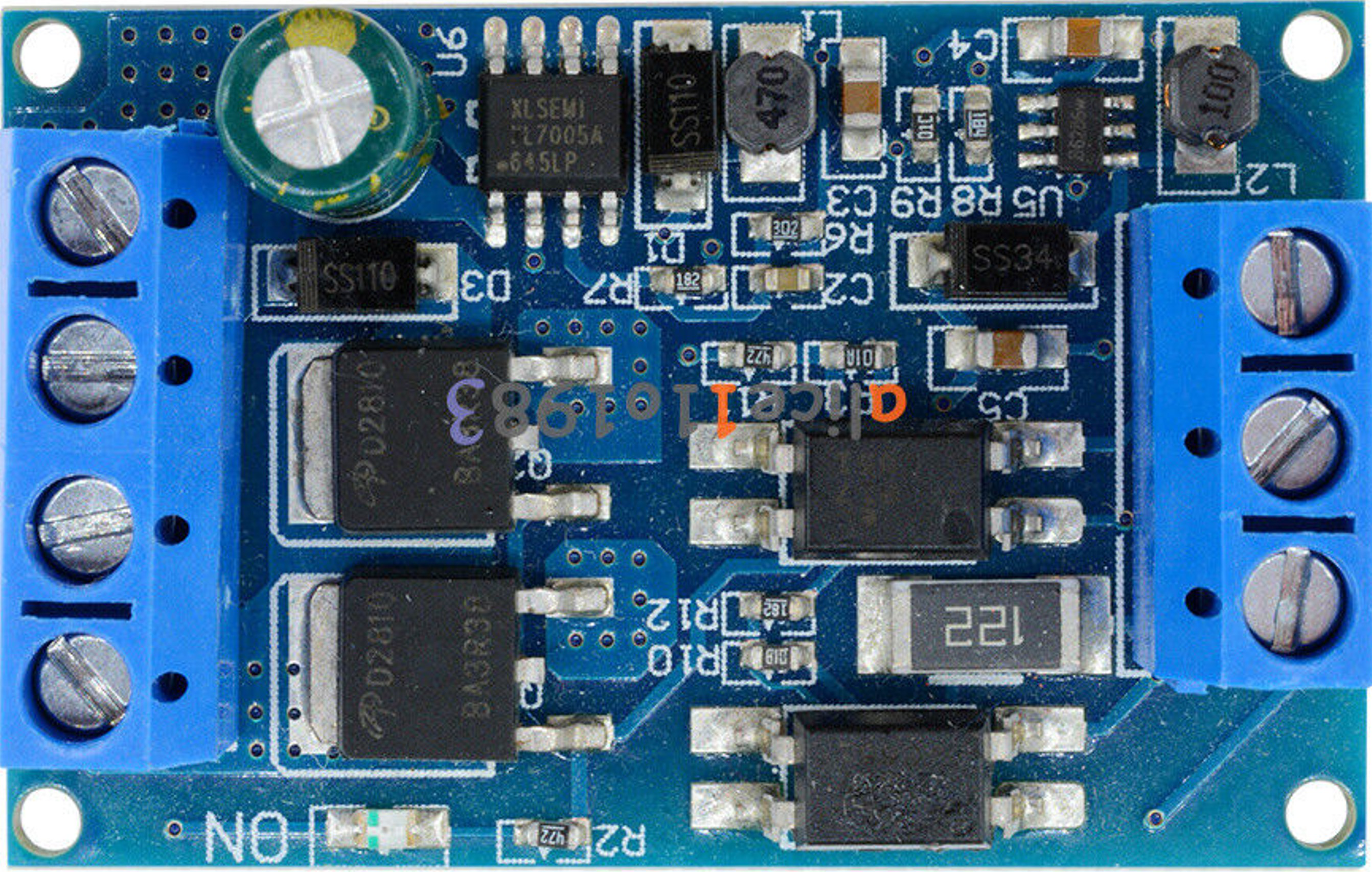
 Design with MOS FET Trigger Drive Switch - flipped in Cirkit Designer
Design with MOS FET Trigger Drive Switch - flipped in Cirkit DesignerIntroduction
The MOSFET Trigger Drive Switch, manufactured by OWN with part ID 2, is a versatile electronic component designed to control the flow of current in a circuit. This Metal-Oxide-Semiconductor Field-Effect Transistor (MOSFET) is used primarily as a switch, and the 'flipped' designation indicates a specific configuration or orientation for the component.
Explore Projects Built with MOS FET Trigger Drive Switch - flipped
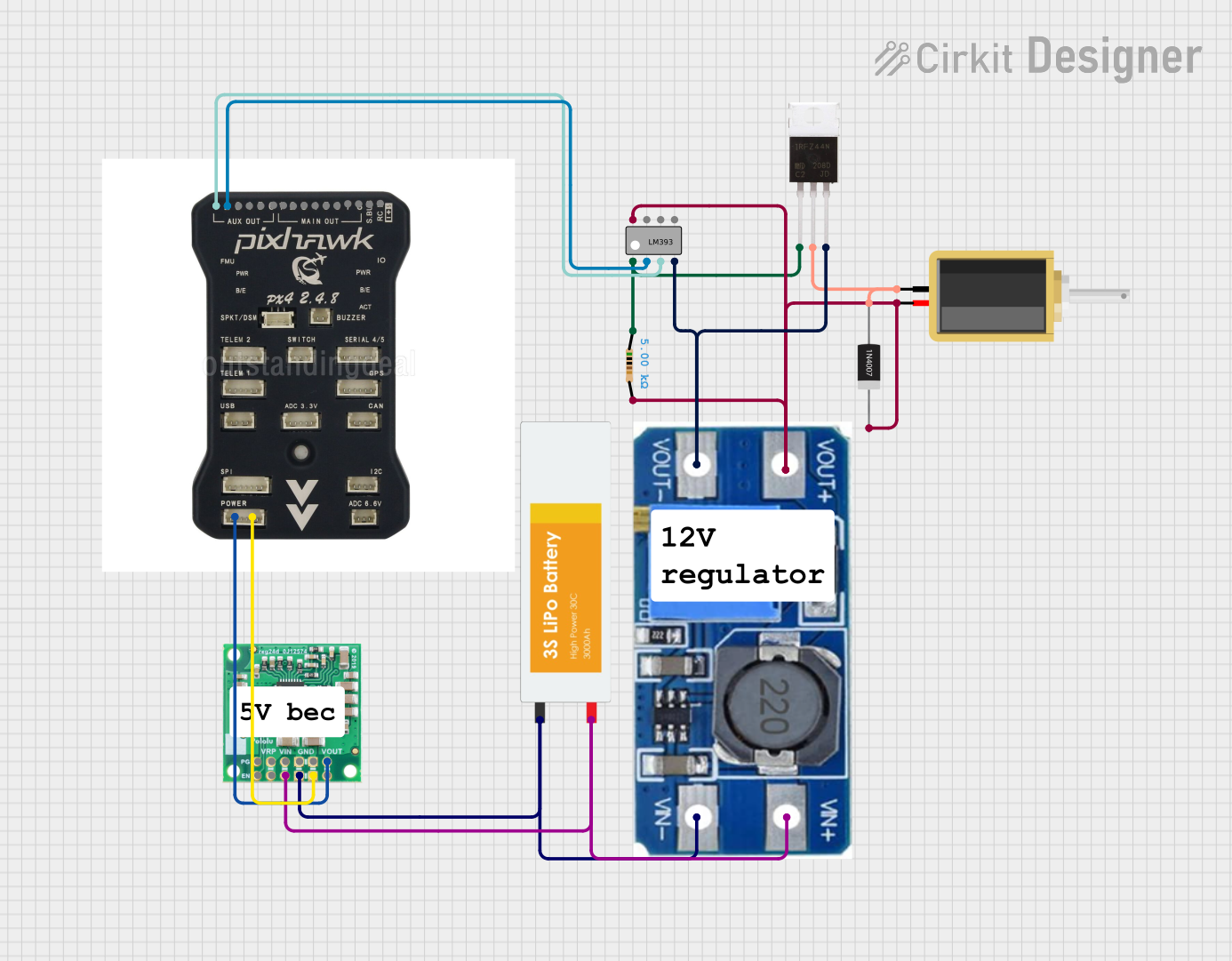
 Open Project in Cirkit Designer
Open Project in Cirkit Designer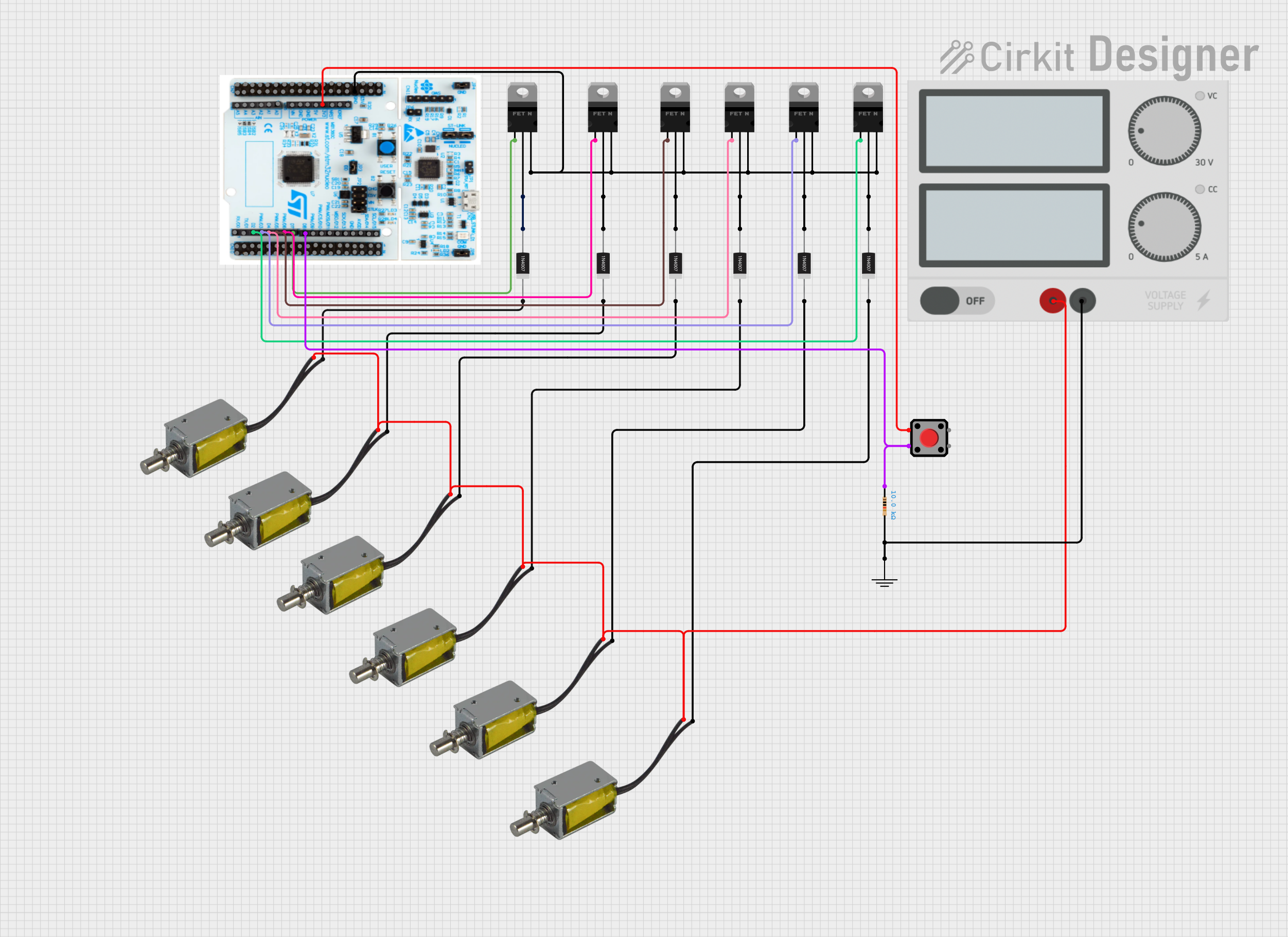
 Open Project in Cirkit Designer
Open Project in Cirkit Designer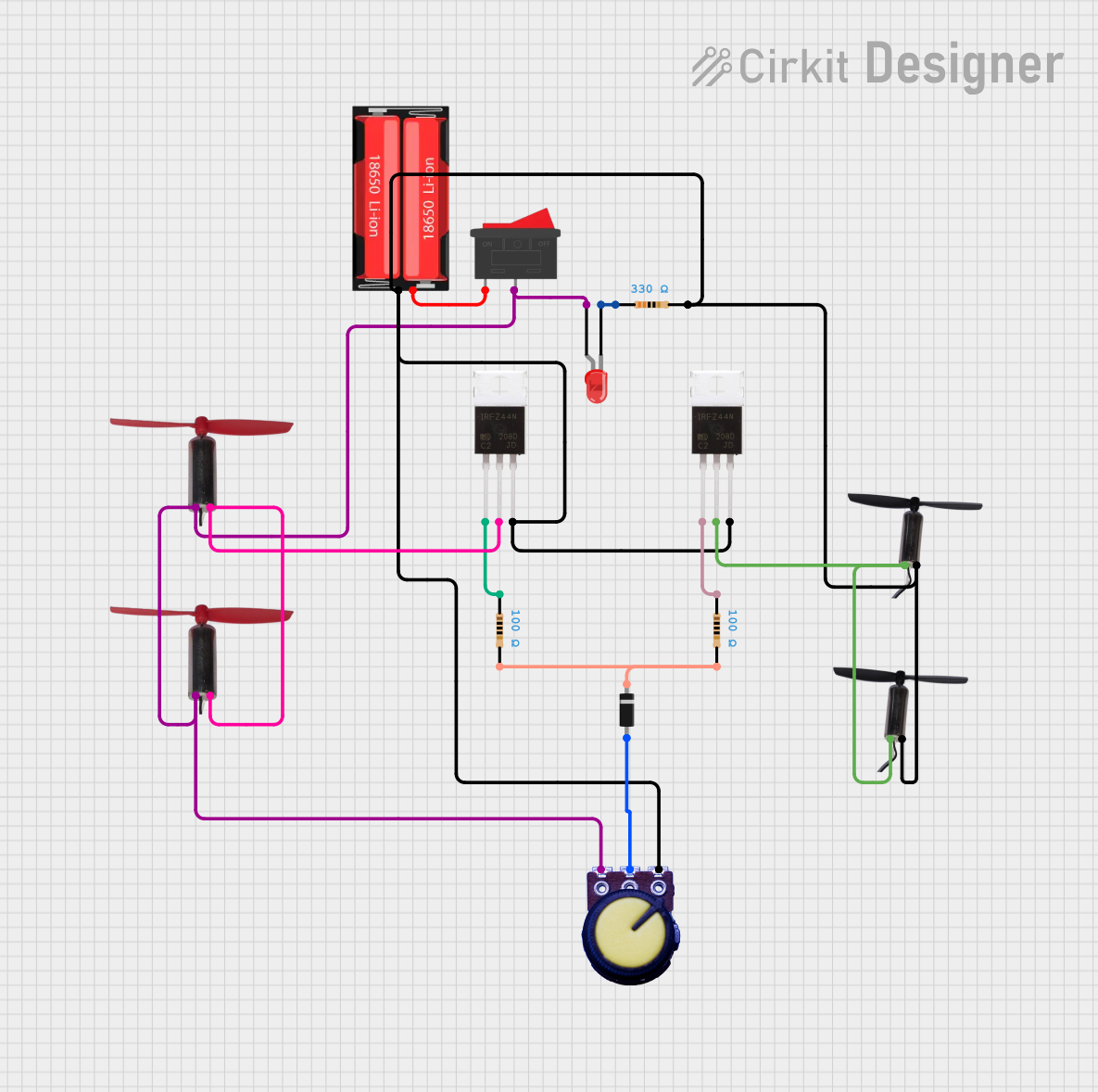
 Open Project in Cirkit Designer
Open Project in Cirkit Designer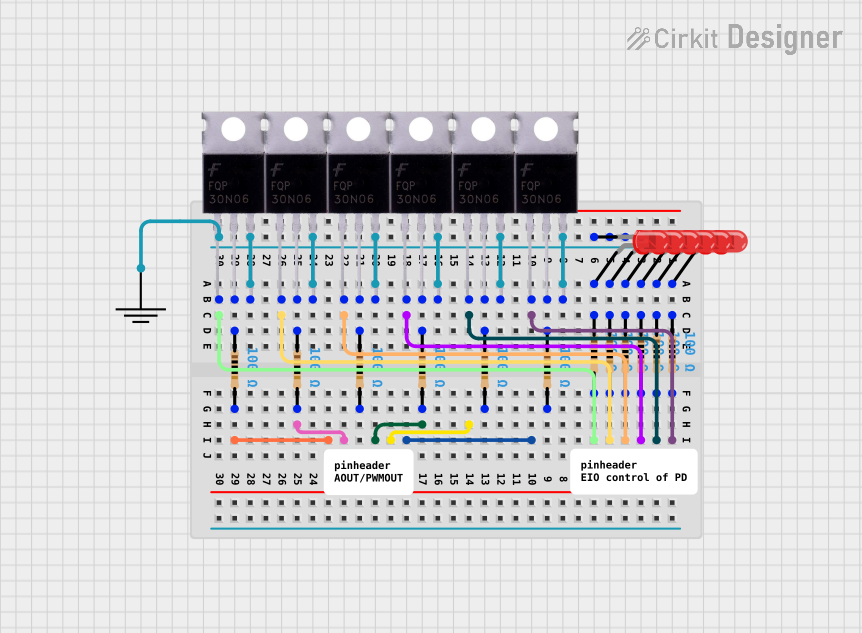
 Open Project in Cirkit Designer
Open Project in Cirkit DesignerExplore Projects Built with MOS FET Trigger Drive Switch - flipped

 Open Project in Cirkit Designer
Open Project in Cirkit Designer
 Open Project in Cirkit Designer
Open Project in Cirkit Designer
 Open Project in Cirkit Designer
Open Project in Cirkit Designer
 Open Project in Cirkit Designer
Open Project in Cirkit DesignerCommon Applications and Use Cases
- Power Management: Efficiently switching power to various parts of a circuit.
- Motor Control: Driving motors in robotics and automation systems.
- LED Control: Dimming and switching LEDs in lighting applications.
- Signal Amplification: Amplifying weak signals in communication devices.
- Arduino Projects: Commonly used in DIY electronics projects involving microcontrollers like Arduino.
Technical Specifications
Key Technical Details
| Parameter | Value |
|---|---|
| Manufacturer | OWN |
| Part ID | 2 |
| Type | N-Channel MOSFET |
| Maximum Voltage | 60V |
| Maximum Current | 30A |
| Gate Threshold Voltage | 2-4V |
| R_DS(on) | 0.035Ω |
| Power Dissipation | 50W |
| Package Type | TO-220 |
Pin Configuration and Descriptions
| Pin Number | Pin Name | Description |
|---|---|---|
| 1 | Gate | Controls the MOSFET switching |
| 2 | Drain | Current flows from drain to source |
| 3 | Source | Current flows to the source |
| 4 | Substrate | Connected to the source internally |
Usage Instructions
How to Use the Component in a Circuit
- Identify the Pins: Ensure you correctly identify the Gate, Drain, and Source pins.
- Connect the Gate: Connect the Gate pin to the control signal, typically from a microcontroller like an Arduino.
- Connect the Drain: Connect the Drain pin to the load you wish to control (e.g., a motor or LED).
- Connect the Source: Connect the Source pin to the ground of the power supply.
- Power Supply: Ensure the power supply voltage does not exceed the maximum voltage rating of the MOSFET.
Important Considerations and Best Practices
- Heat Dissipation: Use a heat sink if the MOSFET is expected to dissipate significant power.
- Gate Resistor: Use a resistor (typically 10-100Ω) between the microcontroller and the Gate to limit the inrush current.
- Flyback Diode: When driving inductive loads like motors, use a flyback diode across the load to protect the MOSFET from voltage spikes.
Example Circuit with Arduino UNO
// Example code to control a MOSFET with an Arduino UNO
const int gatePin = 9; // Pin connected to the Gate of the MOSFET
void setup() {
pinMode(gatePin, OUTPUT); // Set the gate pin as an output
}
void loop() {
digitalWrite(gatePin, HIGH); // Turn on the MOSFET
delay(1000); // Wait for 1 second
digitalWrite(gatePin, LOW); // Turn off the MOSFET
delay(1000); // Wait for 1 second
}
Troubleshooting and FAQs
Common Issues Users Might Face
MOSFET Not Switching:
- Solution: Ensure the Gate voltage is within the specified threshold (2-4V).
- Tip: Check the connections and ensure the control signal is correctly applied.
Overheating:
- Solution: Use a heat sink to dissipate excess heat.
- Tip: Ensure the MOSFET is not exceeding its maximum current rating.
Load Not Responding:
- Solution: Verify the load connections and ensure the load is functional.
- Tip: Check for any loose connections or broken wires.
FAQs
Q: Can I use this MOSFET with a 3.3V microcontroller?
- A: Yes, as long as the Gate threshold voltage is met, the MOSFET can be controlled by a 3.3V signal.
Q: Do I need a special driver for the MOSFET?
- A: For most applications, a direct connection to a microcontroller pin is sufficient. However, for high-speed switching, a dedicated MOSFET driver may be beneficial.
Q: What is the 'flipped' designation?
- A: The 'flipped' designation indicates a specific orientation or configuration of the MOSFET, which may affect how it is mounted or connected in a circuit.
This documentation provides a comprehensive guide to using the MOSFET Trigger Drive Switch - Flipped, ensuring both beginners and experienced users can effectively integrate this component into their projects.